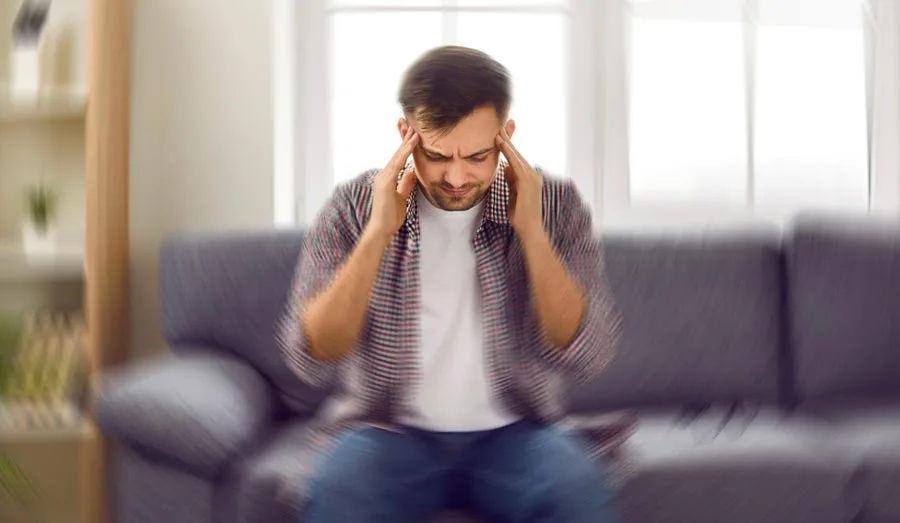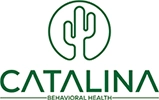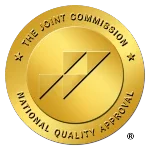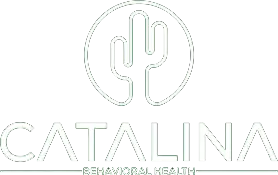Conquering Opioid Addiction with Medication Assisted Treatment
Medication-assisted treatment programs in and around Tucson are excellent resources for individuals from all over the area. Residents from Green Valley, Oracle Junction, and closer areas like Drexel Heights all leverage the power of addiction treatment through the use of prescription medication like Suboxone.
Even people from high-end areas like the Catalina Foothills use these programs to combat drug abuse. Because in the middle of the largest opioid epidemic, this nation has ever experienced – no city, county, neighborhood, or township is left unaffected.
And while Suboxone maintenance is certainly preferable when compared to the alternative – severe withdrawal symptoms, more substance abuse, and constant neglect of whatever mental health disorder that drives said substance use disorder – these therapeutic intervention methods mustn’t lead into revolving doors of opioid addiction, Suboxone for withdrawal symptoms, and ultimately failed relapse prevention as a result of detoxing from Suboxone.
As Suboxone clinics became more popular as a means of maintenance, many users just looked at the partial opioid agonist as a way to dodge opioid withdrawal and ultimately neglected the fact that the regimen of Buprenorphine is only intended for temporary use.
If you or someone you know has fallen into the repeated pattern of a substance use disorder, relapse, and maintenance – or simply remain stuck on the maintenance portion and are now in need of Suboxone detox to help with withdrawal, keep reading.
Our article outlines the steps you can take to find relief in the greater Tucson area, generally and with the proven programs of Catalina Behavioral Health!
How Does Suboxone Withdrawal Work?

The general playbook for Suboxone goes something like this for the average Tucson resident using the medication as a form of addiction treatment – when used correctly:
- The client checks in with a medical professional recommended by SAMHSA (the Substance Abuse and Mental Health Services Administration) looking for relief from opioid withdrawal syndrome and seeking substance abuse treatment.
- Some clients will undergo medically supervised detox, while others will segue directly into a Suboxone regimen to treat opioid addiction.
- During the regimen, the client will receive therapy from a team of medical professionals regarding mental health disorders and relapse prevention, with the ultimate goal of staving off the physical symptoms of withdrawal from drug addiction while healing from the psychological symptoms of opioid use disorder.
- After a certain period, the client reaches a stable dose, allowing them to avoid the uncomfortable symptoms of withdrawal. This makes the recovery process more productive, as the Suboxone satisfies the opiate receptors in the body while drug cravings are still at peak levels.
- While still undergoing treatment for the psychological symptoms, the client will begin to slowly reintegrate back into a normal pattern of living, essentially re-learning how to function as a productive member of society.
- After certain goals are met, outlined through a comprehensive treatment plan drafted with medical professionals in the early stages of recovery, the client will begin to taper off of the Suboxone with the help of their doctor.
- The idea is to avoid the greater portion of the discomfort while gradually leading the body away from physical dependence, all while the client has emotional support, options for alternative therapies, and the other advantages of the recovery process.
24 Hour Suboxone Detox and Rehab Helpline
Unfortunately, this isn’t always the case, and many times, Suboxone abuse ensues. Typically, when this form of addiction medicine isn’t properly utilized or taken on with the assistance of treatment centers and certified clinics (in some cases, abuse can still happen with the presence of a physician), we see one of two potential outcomes:
Scenario 1
- The client fails to see their treatment through to completion, simply using the Suboxone as a temporary crutch until they feel strong enough to finish quitting cold turkey. This is when most clients fail, leading them back into substance addiction and back to reliving the detox process over again, with subsequent efforts typically taking place in a cold turkey environment. This typically happens in a matter of several weeks. For the small percentage who are successful and experience extended sobriety, there typically comes a time after several months when they feel as if they have enough clean time to dabble in heroin or other opioids. Ultimately, this leads to the same scenario mentioned above: Withdrawal symptoms, attempts at cold turkey or at-home detox to beat physical symptoms of withdrawal, and self-medicating with Suboxone that’s acquired illicitly. In many cases, what we see happening is a tolerance build-up to Suboxone, and if frequently taken interchangeably, the client can segue from opioid withdrawal symptoms to Suboxone withdrawal – or both.
Scenario 2
- In this situation, these clients generally conquer their withdrawal symptoms but only moderately address the psychological symptoms of addiction. The result is generally a client who continuously remains on Suboxone, believing it to be solely to avoid the physical symptoms. And while these physical symptoms are certainly a motivating factor, the brunt of the client clutching to Suboxone is their unwillingness to address the underlying psychological symptoms of addiction. This leads them to maintain a subconscious fear of letting go of what’s essentially turned into a crutch or a band-aid instead of an impactful recovery tool. In this scenario, the Suboxone withdrawal can be significantly more severe, especially if the client has remained steadfast in continuing their prescription regimen and avoiding illegal opioids. And while this may seem better than the alternative, deep down, it still shackles the individual to their addiction, albeit outwardly facing, seemingly far less severe.
Suboxone Addiction In Tucson: Tackling a Rising Issue

Suboxone addiction, while an alternative to illegal drugs like heroin and fentanyl, is still a drug addiction. It’s still made up of the same components and the same dynamics and causes the same pitfalls in the life of the user.
However, in the case of Suboxone withdrawal, many believe the recovery process to be far more challenging. Many cite the increased severity of the Suboxone detox, complicated by more painful and longer-acting Suboxone withdrawal symptoms.
So, what do Tucson residents do when they’re faced with Suboxone withdrawal? Remember, this stems from those who typically sought addiction treatment. It’s a challenge that can literally impact anyone – the nurse who treated you at St. Mary’s Hospital, the person who helped you at Safeway. How do you tackle an issue this widespread that begins with those looking to beat withdrawal symptoms in the first place?
The issue must be treated at the root – Suboxone addiction and Suboxone withdrawal take place because clients aren’t properly ushered through detox treatment or educated about Suboxone detox and withdrawal symptoms.
What are the specific Suboxone withdrawal symptoms? And what takes place during Suboxone addiction in the period leading up to Suboxone detox?
The Most Common Suboxone Withdrawal Symptoms
What are the symptoms of Suboxone withdrawal? When someone seeks detox treatment for opioids, engaging in over-use or extended periods of Suboxone treatment leads to addiction and ultimately painful withdrawal symptoms during Suboxone detox.
Just like there is an opioid withdrawal timeline, there is also a Suboxone withdrawal timeline that outlines when and how these symptoms manifest. The symptoms of Suboxone withdrawal include:
Physical Symptoms of Suboxone Withdrawal
- Intense craving for opioids
- Anxiety
- Yawning
- Watery eyes
- Stomach cramps
- Restlessness
- Body aches
- Hot and cold flashes
- Periods of heavy sweating
- Hypersensitivity to smell, touch, and taste
- Tremors and twitching
Psychological Suboxone Withdrawal Symptoms
- Anxiety
- Depression
- Fatigue/demotivation
- Sense of hopelessness
- Difficulty concentrating
The Suboxone withdrawal timeline is somewhat different than that of typical opioids. Once you begin the Suboxone detox process, you can expect the following timetable:
The Window for Suboxone Detox

Days 1-3
Suboxone detox begins when you abstain from Buprenorphine. When you starve your opioid receptors of opiates and opioids, intense drug cravings take place that begins about 12-24 hours after your last dose. The first one to three days without Suboxone may include muscle aches, intense yawning, watery eyes, and restlessness. This is followed by insomnia, excessive sweating, hot and cold chills, goosebumps, lack of appetite, nausea, diarrhea, and more. Some consider this to be the worst, although that’s debatable.
Days 4-7
Between days four and seven, you may experience some of the physical symptoms leveling out. However, many people consider this to be the worst portion because you’re extremely sensitive to any type of change in temperature and touch. Your sense of smell and taste is altered, and you may develop intense headaches due to light sensitivity. The most difficult part during this phase is the lack of sleep – many people are unable to experience a full restful night’s sleep for several days, leading to additional challenges.
Days 7-14
You will notice that most of your physical symptoms have tapered down significantly – however, the lack of sleep is still a concern. It’s important to find assistance at treatment centers, as they can help with medication to assist in restful sleep.
Days 14-28
You may begin to achieve mild levels of sleep. However, the cravings are the most intense at this point. In addition, depression and anxiety can reach their peak levels near the end of 1 month. Alternative therapies provided by treatment facilities and conducted at home can deliver significant benefits.
Get Immediate Help for Suboxone Addiction
Preventing the Worst of Suboxone Detox
Many people will attempt to go through drug detox at home to combat the withdrawals of opioid drugs. Using Suboxone without the assistance of a physician is something that’s strongly recommended against.
A large number of users reach a certain point with Suboxone, whether taken legally or otherwise, where they aren’t able to quit without risking future relapse. And while the risks to your physical health may not present life-threatening symptoms for most – it’s important that you seek medical care using health professionals at a local emergency room, such as St. Mary’s Hospital, Banner University Medical Center Tucson, or Tucson ER and Hospital.
However, while it’s possible you may receive medication to provide temporary relief and fluids to prevent dehydration, a more long-term care plan is necessary to fully recover. So what is the best long-term plan to prevent relapse in the future?
Seeking Treatment for Suboxone Use In Tucson, Arizona

After a significant period of Suboxone use, regardless of the circumstances surrounding the administration, most people need some type of professional medical intervention and medical supervision to stop taking Suboxone.
A co-occurring disorder is often associated, among other psychological aspects, that weren’t properly treated during the initial opioid dependence. These have carried over into the Suboxone use, so users continue suffering from abuse disorder.
Multiple options exist, depending on what level of addiction you’re facing. If you’re suffering from full-blown withdrawal and wish to completely detox, most cases are referred to a comprehensive medically-assisted detox treatment center.
However, if you’re currently taking Suboxone and wish to begin taking steps to end your regimen, you’re an excellent candidate for a Suboxone taper. These can take place in an inpatient or outpatient environment, depending on the severity of your addiction.
Short-Term Suboxone Tapering
For those who wish to taper their Suboxone dose using the help of a medical professional, the best environment is within the confines of an inpatient rehab facility. At Catalina Behavioral Health, we can help clients manage a 7-day Suboxone taper, allowing them to avoid many of the traditional discomforts during withdrawal.
During this 7-day period, clients are given an individual treatment plan that outlines the physical treatment during the taper and the psychological therapies used to treat the addiction and underlying symptoms afterward.
Every client is different, and there’s no blanket remedy for a tapering plan. However, clients may receive antidepressants, anti-anxiety medication, muscle relaxers, sleep aids, and medications to help with any stomach irritation. The goal is to give the client an opportunity to remain as comfortable as possible while eliminating the drug from the system without rapidly ceasing their intake.
After the taper is achieved, clients will continue meeting with therapists and have regular access to talk therapy, holistic therapies, and different behavioral and group therapy sessions to remedy the underlying causes of addiction. With the guidance of the right treatment team, the success rates are extremely high.
Alternatively, there’s a long-term taper that’s likewise available in inpatient rehab but also undertaken during outpatient treatment.
Long-Term Suboxone Tapering
A long-term tapering plan takes place during the course of 30 days instead of 7. The idea remains the same, with the goal of the 30-day taper to allow the client additional time to provide even more relief from the discomfort of withdrawal.
Because the physical side effects are less intense and not quite as demanding on the client, those with a moderately less severe level of addiction have success with this method during outpatient treatment. However, it’s still readily available in an inpatient setting as well.
During outpatient treatment, the client will still receive the same types of therapeutic remedies and access to groups, albeit far less intensive.
Medically Supervised Detox

The third option is selecting a full-blown medically assisted detox. In this situation, there is no taper involved, and the client immediately refrains from using Suboxone. This takes place under the care of certified doctors and nurses in a clinical, inpatient setting, where the client can receive top-tier care and 24/7 monitoring.
Because the chances of the detox period being far more intense are higher, the medical remedies also increase in potency. Doctors and nurses will monitor the client 24/7 to ensure stability and as much comfort as possible. The dispersed medications are likely more powerful and in higher doses. However, it’s worth a reminder that any medication dispensed is only intended for use during the detox period and will not carry over without a thorough assessment from a resident physician.
After the supervised detox, the client will continue the same path as described above, only in the majority of cases, the option will be inpatient rehab and not outpatient.
What Therapies Are Used to Treat Suboxone Addiction?

Treatment for opioid addiction usually includes several forms of behavioral therapies, including:
- CBT (Cognitive Behavioral Therapy)
- DBT (Dialectical Behavioral Therapy)
- Rational Emotive Behavioral Therapy
In addition, clients also have access to holistic forms of healing, offering many benefits for the mind, body, and soul. These include things like art therapy, surf therapy, and various physical activities like Yoga and Pilates.
Family therapy also includes loved ones in the treatment plan, which pays huge dividends for the post-treatment period. The more family is involved in recovery, the higher the chances of remaining successful.
Finally, proper attention must be paid to post-treatment elements. Referring clients to NA and other off-site group meetings is vital. Our facility also provides clients with remedies to continue practicing at home for effective recovery and referrals to local counselors in the Tucson area that may continue to provide assistance with any mental health challenges.
Get Accredited Addiction Treatment Options
Find Relief from Your Suboxone Addiction In Tucson Now
At Catalina Behavioral Health, we help residents from the Tucson area and throughout Arizona to conquer Suboxone and other substance abuse challenges. Our team consists of licensed addiction and mental health practitioners who are experts in behavioral health, holistic treatment, and other evidence-based solutions.
Catalina offers a full medical staff on hand to help maintain our client’s physical health and provide care at all times. For more information about our program, contact a member of our admissions team for a confidential consultation today!




